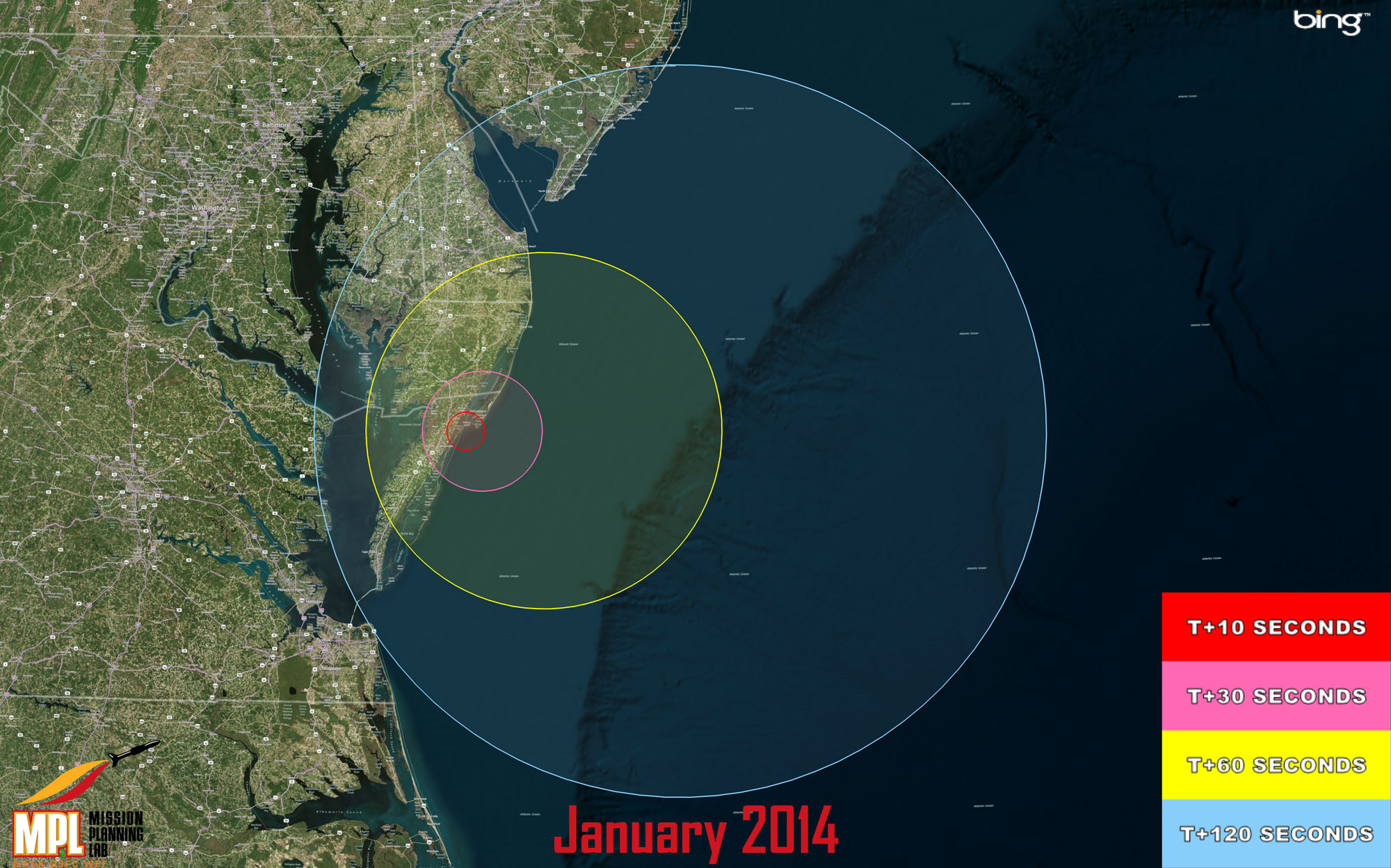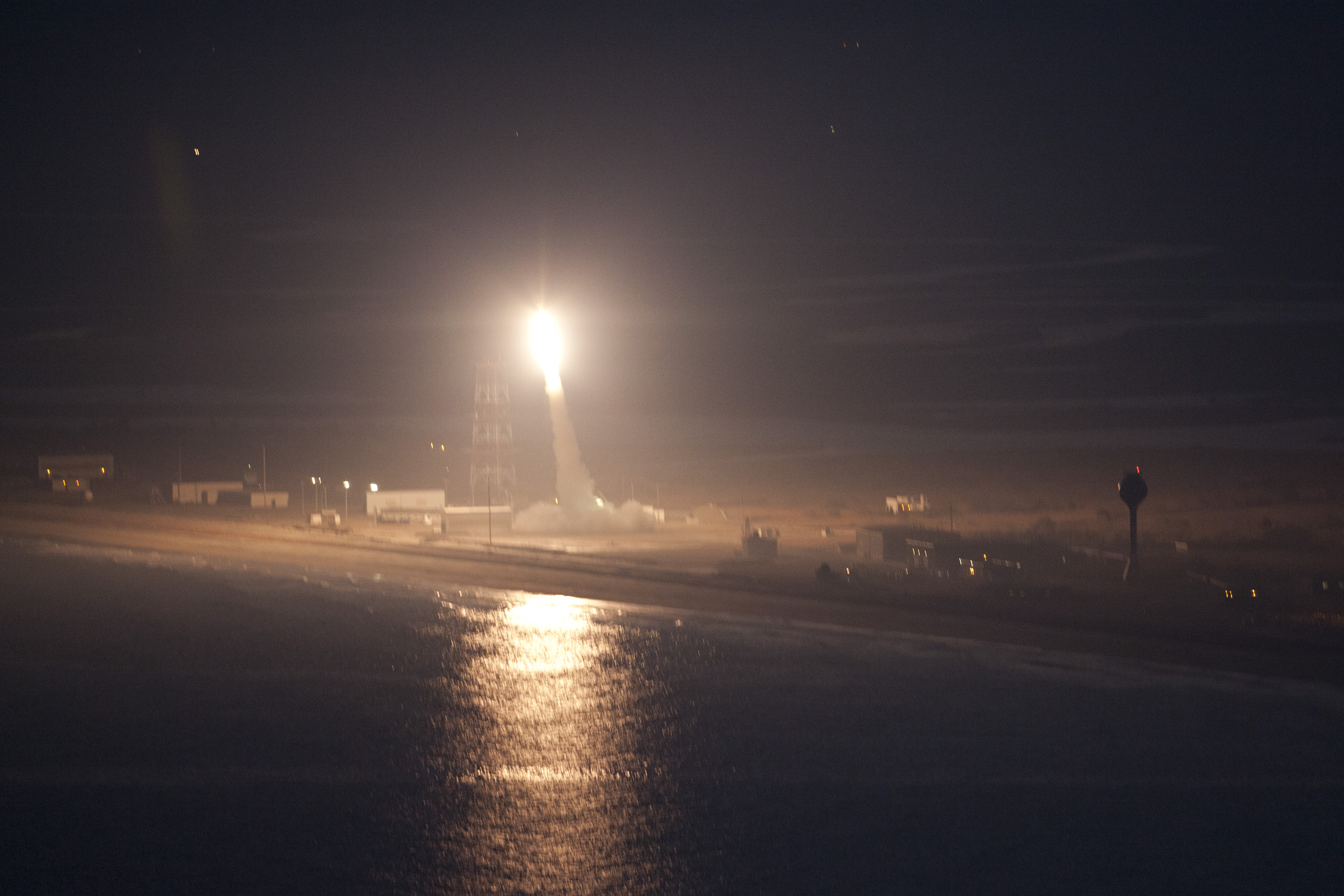
Editor's Note (Update for Jan. 14): The Department of Defense's triple rocket launch from NASA's Wallops Flight Facility in Virginia has been postponed to early Wednesday (Jan. 15) due to weather concerns. The launch is now set for between 1 a.m. and 5 a.m. EST on Wendesday, NASA officials say.
The U.S. military will launch three rockets from Virginia early Tuesday (Jan. 14) in back-to-back-to-back liftoffs that could be visible to observers in the mid-Atlantic region, weather permitting.
Three Terrier-Orion suborbital rockets are scheduled to blast off from NASA's Wallops Flight Facility between 1 a.m. and 5 a.m. EST (0600 to 1000 GMT) Tuesday within a span of 20 seconds, on hush-hush missions for the Department of Defense (DoD).
"At the request of DoD project managers, no real-time status updates will be available," NASA officials wrote in a media advisory about the liftoff. "The launch will not be shown live on the Internet, nor will launch status updates be provided on social media once the countdown begins."
But people living relatively close to Wallops Flight Facility, which lies on Virginia's Wallops Island, may be able to see the rockets streaking toward space through a dark sky, according to a visibility map released by NASA. The launches may be visible from parts of southern New Jersey and Delaware, as well as from Virginia's Eastern Shore.
If Tuesday morning's attempt is scrubbed, backup launch opportunities are also available each day from Wednesday through Saturday (Jan. 15-18), NASA officials said.
Terrier-Orion rockets weigh about 2,900 pounds (1,315 kilograms) and are capable of carrying payloads weighing up to 800 pounds (363 kg), according to a NASA description. The rockets can loft a 200-pound (91 kg) payload to an altitude of 124 miles (200 kilometers) and an 800-pound payload 50 miles (80 km) up.
Get the Space.com Newsletter
Breaking space news, the latest updates on rocket launches, skywatching events and more!
Editor's note: If you snap an amazing photo of the moon, or any other night sky view, and you'd like to share for a possible story or image gallery, please contact managing editor Tariq Malik at spacephotos@space.com.

More than 16,000 sounding rockets have blasted off from Wallops since its founding in 1945, but the facility also supports launches that aim farther afield.
NASA's Lunar Atmosphere and Dust Environment Explorer spacecraft (LADEE) launched toward the moon from Wallops last September, for example, and Orbital Sciences' robotic Cygnus cargo capsule blasted off for the International Space Station from Wallops just last week.
Cygnus arrived at the orbiting lab on Sunday (Jan. 13), delivering 2,780 pounds (1,260 kg) of supplies and experiments on the first of eight contracted cargo missions Orbital Sciences plans to fly under a $1.9 billion deal that the company signed with NASA.
Follow Mike Wall on Twitter @michaeldwall and Google+. Follow us @Spacedotcom, Facebook or Google+. Originally published on SPACE.com.
Join our Space Forums to keep talking space on the latest missions, night sky and more! And if you have a news tip, correction or comment, let us know at: community@space.com.

Michael Wall is a Senior Space Writer with Space.com and joined the team in 2010. He primarily covers exoplanets, spaceflight and military space, but has been known to dabble in the space art beat. His book about the search for alien life, "Out There," was published on Nov. 13, 2018. Before becoming a science writer, Michael worked as a herpetologist and wildlife biologist. He has a Ph.D. in evolutionary biology from the University of Sydney, Australia, a bachelor's degree from the University of Arizona, and a graduate certificate in science writing from the University of California, Santa Cruz. To find out what his latest project is, you can follow Michael on Twitter.









